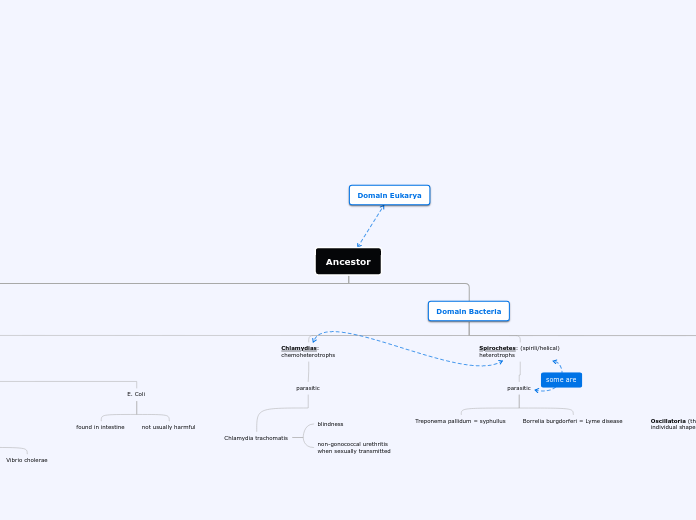Types
Methanogens
- digestive tracts
- decomposing materials in landfills
- muck on standing water
Extremophiles
Extreme thermophiles
Extreme halophiles
Domain Eukarya
Ancestor
Domain Bacteria
Gram-positive bacteria
mycoplasms
smallest cells
pathogens
strptococcus
staphylococcus
Clostridium botulinum = botulism
obligate anerobe
Bacillus anthracis = anthrax
can come in form of
powder as endospores
Actinomycetes
decomposes soil
Cyanobacteria:
photoautotrophic
primary endosymbiosis
in evolution of plants with
chloroplasts that were
cyanobacteria
sinks for CO2 in oceans
generate oxygen
anabaena
photoplankton
Oscillatoria (thread-like colony)
individual shape is currently
Spirochetes: (spirili/helical)
heterotrophs
Borrelia burgdorferi = Lyme disease
Treponema pallidum = syphullus
Chlamydias:
chemoheterotrophs
parasitic
Chlamydia trachomatis
non-gonococcal urethritis
when sexually transmitted
blindness
Proteobacteria (gram-negative):
hetero, chemoauto, photauto,
anerobic and aerobic
E. Coli
not usually harmful
found in intestine
Sulfer Bacteria
Pathogens
Vibrio cholerae
Salmonella
Legionella
Thiomargarita namibiensis
Agrobacterium
used for genetic engineering
tumors in plants
Rhizobium
nitrogen fixation for legumes (plants)
heterotroph
Domain Archaea
Nanoarchaeotes
Crenarchaeotes
Euryarchaeots
Korarchaeotes









